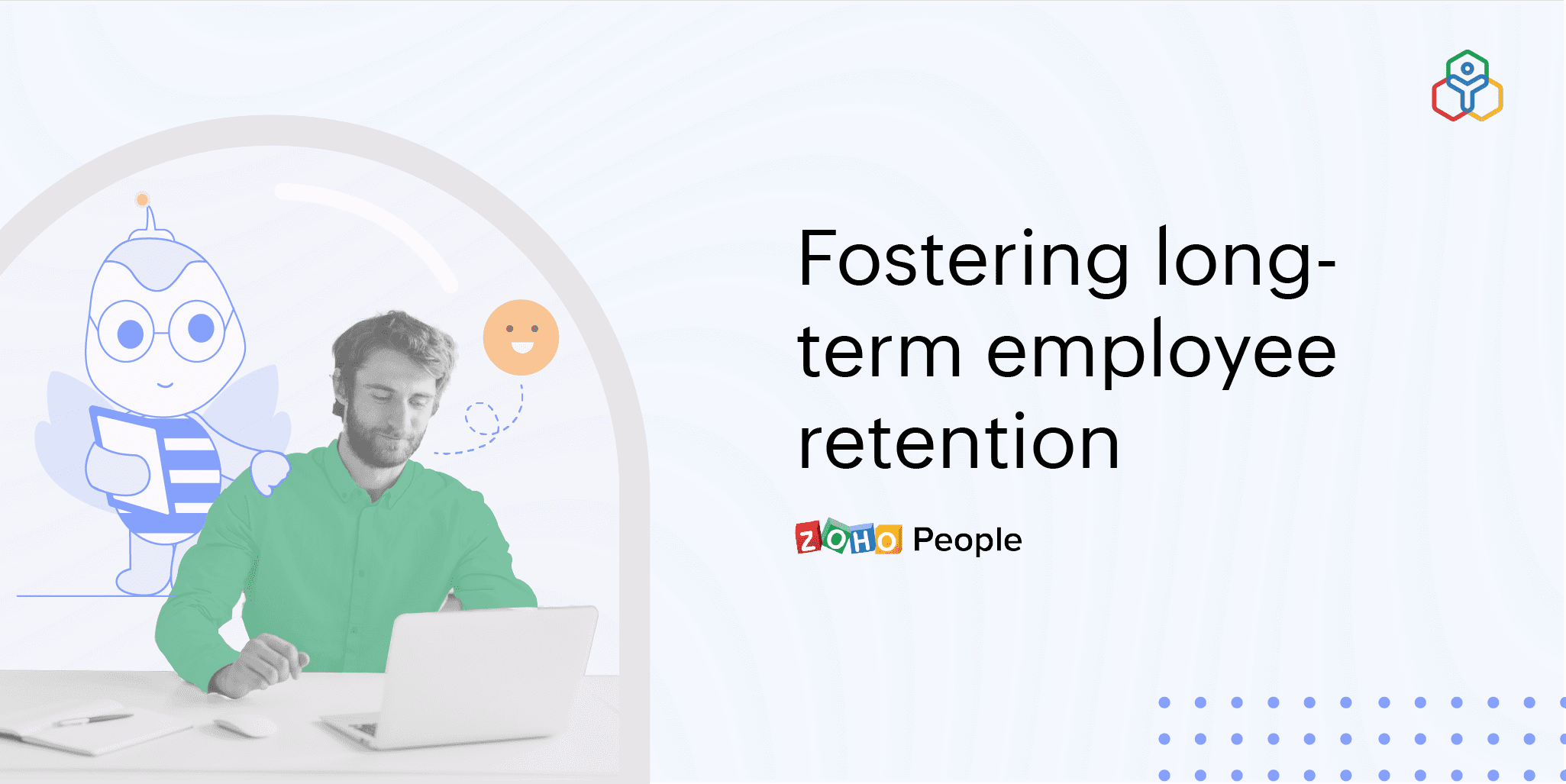- HOME
- HR insights
- How to minimize voluntary turnover in your organization
How to minimize voluntary turnover in your organization
- Last Updated : August 23, 2023
- 2.1K Views
- 4 Min Read

Some organizations still labor under the notion that employee retention is directly tied to material perks. But while employees may be initially charmed by large pay checks, swanky workstations, fancy titles, or benefits that go beyond what's expected, this approach fails in the long run. Despite seemingly irresistible packages, high employee turnover rates continue to baffle employers. More shockingly, an alarming 60-70% of employee turnover is voluntary!
So what exactly is voluntary turnover?
Voluntary turnover reflects the number of employees who willingly leave an organization during a certain time frame. Unlike involuntary turnover, which makes way for better talent to join the organization, voluntary turnover is a massive financial strain for businesses because they often lose well-performing employees and need to spend more time recruiting and training their replacements.
If you run a business or HR department, you may think that the factors influencing an employee's resignation are completely out of your control. It's time to bust this myth. You have a lot more power over voluntary turnover rates at your organization than you may realize. If you can keep your employees engaged, motivated, and happy, they will be more willing to stay for the long haul.
Common reasons employees leave an organization
Career change and progression
After a couple of years in the same organization, monotony can set in. This is especially true if employees don't foresee exciting changes ahead. When workers become bored, they will often leave for new and more challenging roles where they can learn different skills. They may also be seeking a different work environment, whether that's one with stronger face-to-face collaboration or one that is completely remote.
Better work-life balance
Every organization has employees from different walks of life. Some could be young and fresh out of college. Others may be married with children or be single parents. Despite these differences, all employees desire a healthy work-life balance and that must be a priority while implementing policies. Companies that don't provide this balance become unattractive to employees and they will often leave in search of more progressive work environments.
Management issues
It may be cliché to say employees don't quit their jobs, they quit their managers. But it's true that unsupportive or domineering bosses tend to be at the center of turnover problems. When coming to work becomes a burden because of irreconcilable differences with a manager, employees have no other option but to switch to a different company.
How to minimize voluntary turnover
Here's some food for thought: A whopping 77% of the employees who quit could have been retained by their organization. Many simply place employee retention and growth on the back burner until the issue gets out of hand, but this will cause your business undue strain. Great work cultures take time to form. Especially if you are currently facing turnover issues, you will have to root out the core problems and transition to employee-first management techniques before you'll see any tangible improvements. And the sooner, the better.
Here are some initial steps you can take to reduce turnover in your organization:
Onboard employees with more focus on them and less focus on you. An engaging and useful onboarding process can go a long way towards retaining good employees. Don't bombard new employees with lengthy presentations about the vision and mission of your organization. Conduct interactive sessions where employees feel valued and heard right from their first day at work. A successful onboarding process creates the foundation for a positive emotional connection between you as an employer and your employees.
Create forums for safe and open communication. Your managers, from team leads all the way to C-levels, should be approachable and have frequent conversations with their employees to understand what support they need to grow in the organization. This goes for HR staff members as well. When an employee feels supported and recognized for their skills rather than ostracized if they deviate even a little from an overly rigid corporate culture, they will be more likely to stick around.
Craft a meaningful job profile and career path for your employees. When employees know their role contributes to the bottom line of their organization, they are motivated to work harder, and they tend to be happier as well. You can use personality tests to identify an employee or candidate's work preferences and core strengths. Use this as a basis to help build their career path in your organization.
Provide consistent support, focused training, and development opportunities. Having a solid career plan for each employee won't be effective without giving employees the tools they need to progress. Both on-the-job training and formal training will help shape the hard and soft skills that are needed for your employees to climb the corporate ladder and remain in your organization for longer.
Final thoughts
If you are looking to reduce voluntary turnover in your organization, try directing your attention to the needs and requirements of your employees. Surveys, town hall sessions, 360 degree feedback, continuous performance reviews, skip level meetings, and mentorship programs are all great ways to gather input from your employees on what their work experiences are like and what improvements they would like to see. An equal focus on the tangible and intangible benefits offered by your organization is more likely to strike the right balance for better employee retention. While a small percentage of voluntary turnover is inevitable, these measures will help you hold on to more of your top employees. This creates more stability in your organization, allowing stronger innovation, collaboration, and productivity to flourish.


